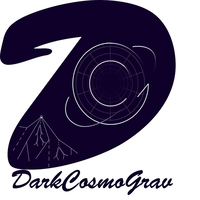Speaker
Description
In this talk, I will try to address the following question: Can we find an $SU(5)-$ GUT completion for composite dark matter models giving an accidentally stable dark matter?
In this work, we consider extending the Standard Model (SM) gauge group by a new confining gauge group dark color. We do this by adding new dark fermions transforming as fundamentals under dark colour and as vector-like representations under the SM. These dark fermions are light: their mass $m$ is lighter than or close to the dark confinement scale, $m < \Lambda_{DC}$. The bound states in the dark sector would then be dark pions and dark baryons with mass $\sim \Lambda_{DC}$. The dark baryons are considered to be robust dark matter (DM) candidates stable due to a dark baryon number broken by dimension-6 operators. For the DM to be a thermal relic, $\Lambda_{DC} $ must be of $\mathcal{O}(100 \ \mathrm{TeV})$. In our work, we consider the dark fermions as low-energy remnants of a grand unified-GUT theory by embedding them in $SU(5)$ GUT multiplets such that each viable model has a GUT counterpart. We find that the dark fermions cannot come in almost degenerate GUT multiplets. We further find that cosmological constraints from Big Bang Nucleosynthesis in addition to unification requirements allow for only certain values of masses for these GUT fermions. However, these mass values give a too large contribution to the DM relic abundance. To evade this, the mass of the GUT states must be lower than the reheating temperature.
In general, we find that the heavy dark GUT states impact both cosmological evolution and grand unification. Our study clarifies under which conditions both aspects of the theory are realistic.
Faculty position
Ph.D, Student
| Topic Field | Particle Physics |
|---|

